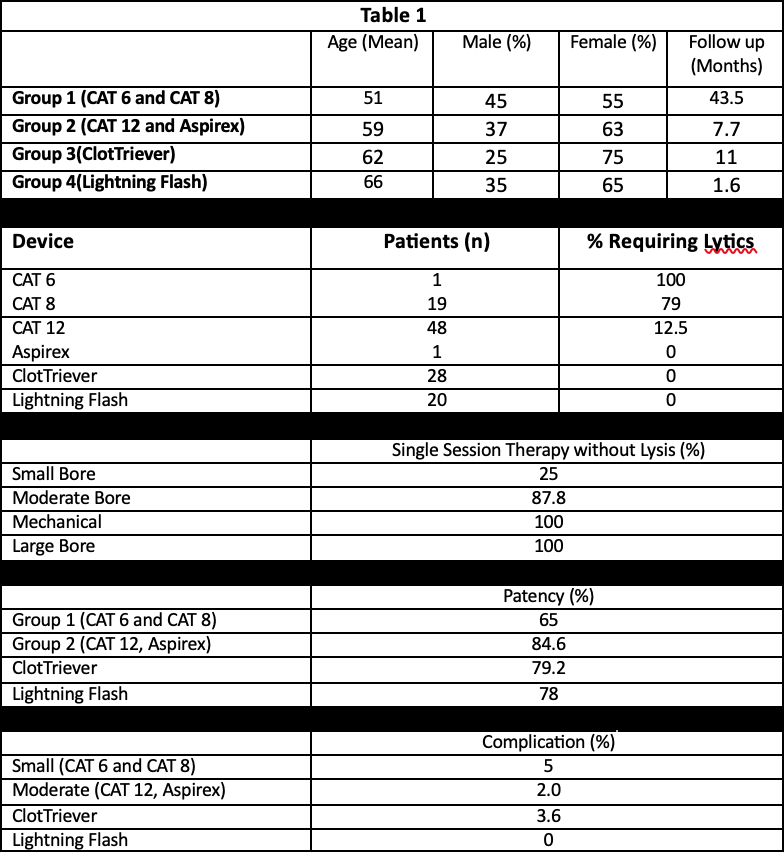OBJECTIVES:Venous thromboembolism continues to be a source of significant morbidity and mortality particularly with iliofemoral DVT. Technological advances in mechanical and aspiration thrombectomy over the past several years have led to questions regarding the need for thrombolytics in these patients. We aimed to evaluate patients with acute iliofemoral DVT who underwent intervention with thrombectomy devices +/- adjunctive thrombolysis. The study objective was to assess the effectiveness and safety of variable size aspiration and mechanical thrombectomy devices and primary iliofemoral venous patency.
METHODS:A review of patients with iliofemoral DVT that underwent thrombectomy was performed. Rate of thrombolysis was recorded for all patients. There were four groups analyzed: Group 1, small bore aspiration catheters including CAT 6 and 8 (n=20); Group 2, medium bore aspiration catheters including CAT 12 and Aspirex (n=49); Group 3, mechanical thrombectomy with ClotTriever (n=28); Group 4, large bore aspiration thrombectomy with Lightning Flash (n=20). Single session therapy/the need for adjunctive thrombolysis, periprocedural complications, and patency of the iliofemoral venous segment were recorded. Removal of >70% of the thrombus was considered successful thrombectomy. Complications included: vessel perforation, access site complication, major hemorrhage, and clinically evident postoperative PE. Statistical analyses were performed using chi square analyses and ANOVA. A p value of < 0.05 determined clinical significance.
RESULTS:Demographic information and study data are summarized in Table 1. Patient demographics did not differ significantly. Devices in groups 2, 3 and 4 (moderate bore, large bore, and mechanical) were more effective at thrombectomy than devices in group 1 (small bore aspiration) with more patients avoiding thrombolytics (group 1=25%, group 2=87.8%, group 3=100%, group 4=100%, p-value< 0.0001). Complication rates were similar (group 1=5%, group 2=2%, group 3=3.6%, group 4=0 %, p-value=0.76). Primary patency also did not differ statistically (group 1=65%, group 2=84.6 %, group 3=79.2%, and group 4=78%, p-value=0.39).
CONCLUSIONS:With improvement in aspiration and mechanical thrombectomy, thrombolysis appears to be avoidable, mitigating the associated risk of hemorrhage. We have one of the largest experiences using Lightning Flash for the treatment of proximal iliofemoral DVTs. We have been 100% effective in avoiding the use of adjunctive thrombolysis without periprocedural complications using Lightning Flash. 